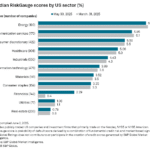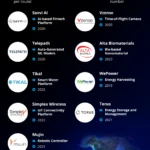In 2025, ESG—Environmental, Social, and Governance—has evolved from a corporate buzzword to a critical risk management framework. Across the U.S. and globally, investors, regulators, employees, and consumers are demanding that companies not only generate profit but do so responsibly. As ESG metrics become central to valuations, supply chain decisions, and reputational standing, the need for robust ESG risk control mechanisms is more urgent than ever.
This blog explores how U.S. companies are implementing risk controls in ESG areas, what frameworks and tools they are using, and why managing ESG risks is essential for financial resilience, investor confidence, and long-term sustainability.
What Is ESG Risk?
ESG risk refers to exposure to non-financial factors—environmental damage, labor rights violations, governance scandals—that can materially affect a company’s performance, reputation, and access to capital.
ESG Components:
| Category | Examples of Risks |
|---|---|
| Environmental | Climate change, pollution, water scarcity, deforestation |
| Social | Labor practices, human rights, diversity, consumer data privacy |
| Governance | Executive pay, board independence, bribery, shareholder rights |
These risks are deeply interconnected. For example, a company that pollutes the environment (E) may face community backlash (S) and board scrutiny (G).
Why ESG Risk Control Matters in 2025
1. Investor Pressure
- Over $40 trillion in global assets are now managed with ESG considerations.
- U.S. institutional investors increasingly screen for ESG risks before investing.
- ESG ratings affect access to capital, loan terms, and shareholder trust.
2. Regulatory Landscape
- SEC’s climate disclosure rule (expected full rollout in 2025) mandates emissions reporting for public companies.
- California’s SB-253 and SB-261 laws require Scope 1, 2, and 3 emissions disclosures.
- New laws on supply chain transparency and social accountability (Uyghur Forced Labor Prevention Act) raise social risk exposure.
3. Reputation and Consumer Behavior
- 71% of U.S. consumers prefer sustainable brands (NielsenIQ, 2024).
- Social media magnifies ESG missteps (e.g., Nike, BP, Facebook).
- Brand loyalty now depends on ethical and transparent practices.
How U.S. Companies Control ESG Risks
Let’s dive into practical strategies used by leading U.S. businesses to manage ESG-related risk.
1. Materiality Assessment and ESG Risk Mapping
Materiality assessments identify which ESG issues are most relevant to a company’s sector, geography, and stakeholders. Risk mapping then prioritizes those issues by impact and likelihood.
Process:
- Engage stakeholders (investors, employees, customers, NGOs)
- Analyze industry benchmarks and peer ESG reports
- Use tools like SASB Materiality Map or GRI Standards
- Create ESG heat maps linking risks to operational, legal, and reputational outcomes
Example:
For an apparel company, water usage, labor rights, and supply chain emissions might top the materiality list, while for a tech firm, data privacy and energy usage may dominate.
2. Integrated ESG Governance Structure
Governance is the backbone of ESG risk control. Top companies are embedding ESG into board structures, risk committees, and executive compensation.
Key Practices:
- Appoint Chief Sustainability Officer (CSO) or Head of ESG
- Form ESG board subcommittees
- Tie executive bonuses to ESG KPIs (e.g., carbon reduction, DEI targets)
- Include ESG in enterprise risk management (ERM) frameworks
Case Study:
Apple ties a portion of executive bonuses to environmental and labor rights performance, ensuring top-down accountability.
3. Climate Risk Assessment and Carbon Management
With rising climate regulations and physical climate threats (wildfires, floods, droughts), companies must assess and act on climate-related financial risks.
Tools Used:
- Scenario analysis (e.g., IPCC pathways, Net-Zero 2050)
- Task Force on Climate-Related Financial Disclosures (TCFD) reports
- Carbon accounting platforms (e.g., Watershed, Persefoni)
- Climate transition plans with interim milestones
Types of Climate Risk:
- Physical risks: Asset damage due to climate events
- Transition risks: Cost from carbon pricing, policy changes
- Liability risks: Litigation for environmental damages
Example:
Amazon tracks its carbon footprint via Scope 1, 2, and 3 emissions and has committed to reach net-zero by 2040.
4. Supply Chain Due Diligence
Many ESG risks hide upstream—in suppliers’ factories, mines, or farms. Companies must conduct ESG due diligence on third-party partners.
Methods:
- Supplier ESG audits (on-site or remote)
- Certification requirements (Fair Trade, ISO 14001, SA8000)
- Digital traceability tools (e.g., Sourcemap, Everledger)
- Supplier ESG scoring systems and corrective action plans
Compliance Requirements:
- California Transparency in Supply Chains Act
- UFLPA: Bans goods linked to forced labor in Xinjiang
- EU’s Corporate Sustainability Due Diligence Directive (CSDDD) will affect U.S. exporters to Europe
5. Social Risk Management and DEI
The “S” in ESG—social risk—is often overlooked but can deeply impact brand trust, workforce stability, and customer loyalty.
Social Risk Controls:
- Regular employee engagement surveys
- Diversity, Equity, and Inclusion (DEI) scorecards
- Health and safety risk tracking (OSHA compliance)
- Community impact assessments
Example:
Microsoft’s “Global Human Rights Statement” and DEI dashboard make their social policies transparent and measurable.
6. Ethical Governance and Anti-Corruption Programs
Strong governance ensures ESG commitments are not just marketing fluff. It includes transparent operations, ethical leadership, and clear accountability.
Key Controls:
- Anti-corruption training and whistleblower hotlines
- Internal audit of ESG metrics and disclosures
- ESG-linked internal controls and code of conduct
- Executive oversight of lobbying and political contributions
Trend:
More companies are voluntarily publishing proxy statements and shareholder engagement reports detailing ESG-related votes and actions.
7. Data-Driven ESG Risk Monitoring
Top companies are adopting AI, IoT, and ESG data platforms to monitor and predict ESG risk.
Technology Tools:
- AI ESG sentiment analysis of news/social media (e.g., RepRisk)
- IoT sensors to track emissions, energy, and waste
- ESG scoring platforms: MSCI, Sustainalytics, Bloomberg ESG, Clarity AI
- ESG software (Workiva, Diligent, EcoVadis)
Benefit:
Real-time ESG dashboards help decision-makers act fast when indicators trend negatively.
8. Stakeholder Engagement and Transparent Reporting
Open dialogue reduces ESG litigation and backlash. Many companies now co-create policies with community leaders, NGOs, and employees.
Reporting Best Practices:
- Publish annual ESG or sustainability reports
- Align disclosures with TCFD, GRI, SASB, or CDP
- Participate in ESG ratings and indexes (e.g., Dow Jones Sustainability Index)
- Disclose ESG controversies and remediation transparently
Example:
PepsiCo’s ESG reports cover water usage, supply chain ethics, and packaging sustainability, with clear targets and progress updates.
9. Insurance and ESG Risk Transfer
As ESG events become more frequent, companies are turning to risk transfer mechanisms.
Insurance Types:
- Environmental liability insurance (pollution clean-up)
- D&O insurance with ESG rider (covers lawsuits for ESG misstatements)
- Parametric climate insurance
- Social impact bonds or resilience bonds
10. Preparing for ESG Litigation and Reputational Risk
With rising climate lawsuits and shareholder activism, legal teams now work hand-in-hand with sustainability departments.
Legal Risk Controls:
- ESG disclosure reviews before earnings calls or filings
- Vetting marketing materials to avoid greenwashing claims
- Preparing legal defenses for activist investor campaigns
- Monitoring ESG lawsuits in related industries
Real-World ESG Risk Events
Volkswagen Emissions Scandal (2015)
- Governance failure led to fake emissions reporting
- $35B+ in fines and brand damage
Facebook–Cambridge Analytica Scandal (2018)
- Social data privacy violation
- Triggered global regulatory scrutiny
PG&E Wildfire Bankruptcy (2019)
- Climate-driven events + poor infrastructure investment
- Filed for bankruptcy due to wildfire liabilities
Lesson:
Ignoring ESG risk today means paying the price tomorrow—in court, on Wall Street, or in the court of public opinion.
ESG Risk Controls for Mid-Sized and Small U.S. Businesses
You don’t need a billion-dollar budget to start controlling ESG risk. Even SMBs can:
- Publish a code of conduct and ESG values on their website
- Track waste, water, and energy usage monthly
- Use free ESG templates from GRI or SASB
- Engage employees in DEI, volunteering, or environmental projects
- Use accounting firms offering ESG assurance
Conclusion: ESG Risk Control Is Business Risk Control
ESG is no longer a CSR checklist—it’s a core business risk function. U.S. companies that proactively manage ESG risks will benefit from:
- Lower capital costs
- Greater brand trust
- Resilient supply chains
- Talent retention
- Long-term shareholder value
In the era of global volatility and rising stakeholder expectations, ESG risk control isn’t a trend—it’s a strategic edge.


